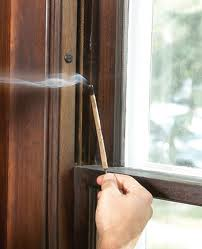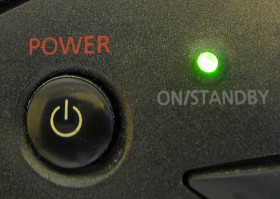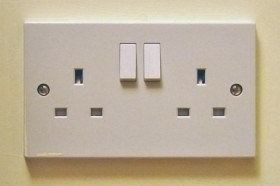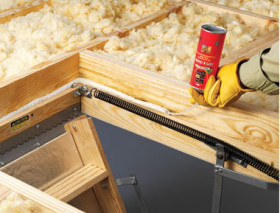Follow these energy saving DIY steps to start decreasing your bills. Source Energy will do the rest by designing, supplying, installing, commissioning and maintaining your ground or air source heat pump.
1. Drafty Window Test
Leaky window frames can lead to outside air entering your home, while warmed air escapes. To perform your own drafty window test, firstly close all windows, exterior doors and the chimney-flue damper. Next, light a stick of incense and move it around your window perimeter, then watch for air that interrupts the rise of the smoke.

2. Fireplace Damper Damage
Warmed air can also escape your home via your chimney-flue if it passes around a loose-fitting, rusted or stuck damper. To see if air is flowing up your chimney, close the damper and hold a lit candle inside the firebox. Air is flowing up your chimney if the flame is blown out or beaten around.
3. Don’t stand for “Standby”
Even if your electrical appliances aren’t in use, if they have an AC power adapter on the cord, a digital clock or an indicator light, turn them off. They are still contributing to your electricity costs.

4. Insulate Switches & Outlets
These are basically big holes in your wall, a thin plate will not prevent air from getting through these gaps. To see if you’ve got a leak, loosen the plate and cover it with a sheet of tissue attached to your wall. If the tissue moves, your property is leaking air. Electrical safety is paramount. Please seek qualified advice if you are uncertain on how to complete this task.

5. Fridge Door Test
Close the door of your refrigerator on a piece of paper and pull it out. Was there any resistance? If not, chilled air could be escaping due to a broken gasket seal. Your fridge is probably costing you more than it should to operate.
6. Attic Hatch Test
Similar to the Drafty Window Test, use an incense stick to see if your attic hatch is sucking air out of your living area. Close all windows and doors, turn on your air conditioner or furnace then move the stick around the hatch. Is the smoke seeping between the access panel and the frame? If it is, you have a leak.

7. Wall Openings
Much like switches and outlets, exterior openings should also be considered as big holes in your building. Commonly uninsulated holes include water and sewer lines, phone and cable lines and exhaust vents. Rent a thermal leak detector and pass the device over the solid wall area, then the holes. You have an air leak if you notice a significant temperature difference.
8. Under-the-door Infiltration
Exterior doors are often to blame for a great deal of your heat loss. Similarly to how you test your fridge door, close your door on a piece of paper placed the on threshold. Can you pull the paper out easily? You’re losing heat.
9. Old-style water heater?
If you feel warmth when you touch your heater, it’s lacking insulation. Heaters older than 10 years are commonly lined with fibreglass, which is less efficient than foam. Check the date on the manufacturer sticker.
10. Check your ductwork
Heated or cooled air could be escaping as a result of dried out adhesive tape between duct sections. With your boiler on, shine a powerful light on the ducts, playing close attention to junctions where they connect with registers. You could have an air leak if you can see where dust on the exterior of the ducts has been blown away.
Ask the energy saving experts
Request a quote today or call 0800 865 4328 to ask our experts about the best heat pump solution for you.
With Source Energy, you’re in safe hands.